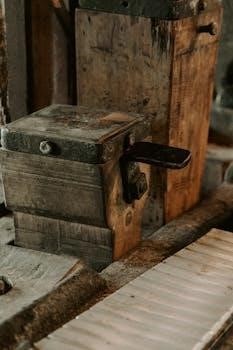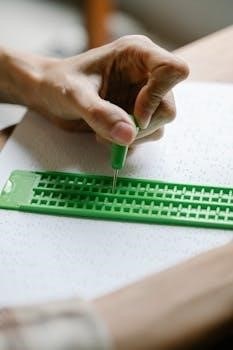Candy Washing Machine Manual Symbols⁚ A Comprehensive Guide
Navigating the world of laundry can be perplexing‚ especially when deciphering the symbols on your Candy washing machine. This comprehensive guide aims to unravel the mystery‚ providing clarity. Understanding these symbols is crucial for optimal appliance use and garment care‚ ensuring efficient‚ effective washing cycles.
Welcome to the essential guide to understanding Candy washing machine symbols. In today’s world‚ laundry appliances are equipped with a multitude of settings and features‚ often represented by cryptic icons. Candy washing machines‚ known for their innovative technology‚ are no exception. These symbols are designed to communicate the function of each setting efficiently‚ allowing you to tailor your wash to specific garment needs. However‚ without proper understanding‚ these symbols can be confusing‚ leading to improper usage and potentially damaging your clothes. This guide aims to demystify these symbols. It will empower you to use your Candy washing machine effectively.
Whether you’ve misplaced your manual or simply seek a clearer understanding‚ this resource is tailored to provide easy-to-understand explanations of the most common symbols found on Candy washing machines. We will explore everything from basic wash cycles to specialized programs‚ temperature settings‚ and spin speed indicators. This knowledge allows you to select the appropriate wash cycle‚ maximizing cleaning performance while minimizing the risk of damaging delicate fabrics. By the end of this guide‚ you’ll be well-equipped to confidently operate your Candy washing machine and achieve optimal laundry results every time.
Understanding Basic Wash Symbols
The foundation of operating any washing machine‚ including Candy models‚ lies in understanding the basic wash symbols. These symbols represent different types of wash cycles designed for various fabric types and levels of soiling. The most common symbol is typically a stylized tub filled with water‚ often with a number inside indicating the maximum water temperature in Celsius. A single bar underneath the tub signifies a gentler wash‚ ideal for delicate items. Two bars indicate a very gentle cycle‚ suitable for items requiring extra care.
A hand in the tub means it’s a hand-wash only item. Understanding these variations is critical to prevent damage and ensure your clothes are cleaned effectively. Another frequent symbol is a square‚ which relates to drying instructions‚ but within the context of the wash cycle‚ it may indicate pre-wash or rinse-hold options. Familiarizing yourself with these basic symbols is the first step towards mastering your Candy washing machine. This knowledge will allow you to confidently select the appropriate wash cycle for your laundry needs. This helps to prolong the life of your garments and optimize your washing machine’s performance.
Decoding Temperature Settings
Temperature settings are crucial for effective laundry‚ and Candy washing machines utilize symbols to represent them. These symbols typically involve the wash tub icon‚ often accompanied by numbers indicating the water temperature in Celsius. A “cold wash” setting might be represented by a snowflake or a tub with no numerical value. Warmer temperatures are shown with increasing numbers‚ such as 30°C‚ 40°C‚ or 60°C.
Higher temperatures are generally used for heavily soiled items and whites‚ while lower temperatures are better for delicate fabrics and colors to prevent fading or shrinking. Some Candy models might use dots instead of numbers‚ where each dot corresponds to a specific temperature range. Always refer to your garment’s care label to determine the recommended washing temperature. Selecting the correct temperature is vital for achieving optimal cleaning results while preserving the quality of your clothes;
Incorrect temperature selection can lead to damage‚ color bleeding‚ or ineffective stain removal. Also‚ consider the energy consumption‚ as higher temperatures require more energy. Understanding these temperature symbols and their implications will empower you to make informed decisions when doing laundry with your Candy washing machine‚ ensuring both clean clothes and energy efficiency.

Spin Speed Indicators Explained
Spin speed indicators on Candy washing machines dictate how quickly the drum rotates during the spin cycle‚ impacting the amount of moisture extracted from your clothes. These settings are usually represented by symbols showing a spiral or a circular arrow‚ often accompanied by numbers indicating the rotations per minute (RPM). Lower RPMs‚ like 400 or 600‚ are gentler on delicate fabrics‚ reducing the risk of damage or stretching.
Higher RPMs‚ such as 1000‚ 1200‚ or even 1400‚ are suitable for more robust fabrics like cotton and towels‚ effectively removing more water and reducing drying time. Some Candy models might feature a “no spin” option‚ represented by the spin symbol crossed out‚ which is ideal for very delicate items that should not be spun at all. Understanding these spin speed symbols is essential for protecting your clothes and optimizing the drying process.
Selecting an appropriate spin speed prevents excessive wear and tear‚ minimizes wrinkles‚ and saves energy by reducing the load on your dryer. Always check the garment’s care label for recommended spin speeds and adjust your washing machine settings accordingly. Ignoring these indicators can lead to damaged clothes or inefficient washing cycles. Using the correct spin speed ensures your laundry is treated with care while achieving the best possible results.
Special Program Symbols (e.g.‚ Delicates‚ Wool)
Candy washing machines boast a range of special programs designed for specific fabric types‚ each indicated by a unique symbol. The “Delicates” program‚ often represented by a gentle hand or a piece of lace‚ uses a lower spin speed and gentler wash action to protect fragile items like lingerie and silk. Conversely‚ the “Wool” program‚ symbolized by a wool ball or a sheep‚ is crafted to clean woolens without causing shrinkage or damage‚ typically involving a cold water wash and a reduced agitation cycle.

Other specialized programs may include “Synthetics‚” depicted by a chemical flask‚ which caters to synthetic fabrics with a moderate wash and spin. “Cottons‚” shown by a cotton boll‚ provides a more intensive wash for durable cotton items. Some machines also feature an “Eco” mode‚ usually indicated by a leaf or a water droplet‚ which optimizes water and energy consumption.
“Rinse Only” and “Spin Only” programs‚ symbolized by a rinsing tub and a spiral‚ respectively‚ allow you to rinse or spin clothes separately. Recognizing these symbols and understanding their corresponding programs is vital for achieving the best cleaning results while preserving the quality of your garments. Always consult your Candy washing machine manual for a detailed explanation of each program and its recommended usage to avoid any laundry mishaps.

Error Code Symbols and Troubleshooting
Modern Candy washing machines are equipped with error code systems that alert users to potential malfunctions. These errors are typically displayed as a combination of letters and numbers on the machine’s control panel. Each code corresponds to a specific issue‚ such as a drainage problem‚ a water inlet fault‚ or a motor malfunction. Recognizing these codes is the first step in troubleshooting your washing machine.
For example‚ an “E20” error might indicate a drainage problem‚ suggesting that the drain pump is blocked or the drain hose is kinked. “E03” could signify a water inlet issue‚ pointing to a closed water tap or a blocked inlet filter. Consulting your Candy washing machine manual is crucial for deciphering the exact meaning of each error code.
The manual will also provide basic troubleshooting steps you can take to resolve the issue. These steps might include checking the drain hose for blockages‚ cleaning the inlet filter‚ or ensuring the water tap is fully open. If the troubleshooting steps don’t resolve the problem‚ it’s best to contact a qualified appliance repair technician. Attempting to fix complex issues without proper knowledge could lead to further damage to your washing machine. Always prioritize safety and consult the manual for guidance.
Detergent Drawer Symbols and Usage
The detergent drawer in your Candy washing machine is designed with specific compartments‚ each marked with a symbol indicating its purpose. Understanding these symbols ensures you add detergents and additives correctly‚ optimizing washing performance. The most common symbols include a compartment marked with “I” or a single bar‚ intended for pre-wash detergent. This is used for heavily soiled items requiring an initial wash cycle.
The compartment labeled “II” or with two bars is for the main wash detergent. This is where you add the detergent for the primary cleaning cycle. Another compartment‚ often marked with a flower or a star‚ is for fabric softener. Adding fabric softener to the correct compartment ensures it’s released during the final rinse cycle‚ leaving your clothes soft and fresh.
It’s crucial to use the appropriate type and amount of detergent as recommended by the detergent manufacturer and your Candy washing machine manual. Overfilling the compartments can lead to detergent residue on your clothes‚ while using the wrong type of detergent can damage your machine or affect washing results. Regularly cleaning the detergent drawer prevents clogs and ensures proper dispensing of detergents and additives.
Hoover and Candy Washing Machine Symbol Similarities
Hoover and Candy are both brands under the same parent company‚ the Candy Hoover Group. Consequently‚ there are significant similarities in the symbols used on their washing machines. This is especially true for newer models and those featuring smart technology. The core wash cycle symbols‚ such as those for cotton‚ synthetics‚ delicates‚ and wool‚ are often represented identically across both brands. Temperature settings and spin speed indicators also tend to follow a standardized format.
You will find similarities in special program symbols‚ such as those for stain removal‚ rapid wash‚ or energy-saving modes. Error code symbols‚ designed to alert users to potential issues‚ are often shared between Hoover and Candy machines. The layout and design of the control panels may differ slightly‚ but the underlying symbols and their meanings remain consistent.
This standardization simplifies the user experience‚ particularly for those familiar with either brand. Whether you’re transitioning from a Hoover to a Candy washing machine or vice versa‚ recognizing the shared symbols allows for seamless operation and optimal laundry care. Refer to your specific model’s manual for any variations or unique symbols.
Finding Your Specific Model’s Manual
Locating the user manual for your exact Candy washing machine model is crucial for understanding its unique features and symbol designations. The manual provides detailed explanations of each symbol and program‚ ensuring you operate the machine correctly and care for your garments appropriately. The first place to look is with the appliance itself‚ often tucked inside the packaging. If you’ve misplaced the physical copy‚ don’t worry; digital versions are readily available.

Visit the official Candy website and navigate to the “Support” or “Downloads” section. Here‚ you can typically search for your manual by entering your washing machine’s model number‚ usually found on a sticker located on the machine’s door frame or back panel. Many third-party websites also host appliance manuals. However‚ exercise caution when downloading from unofficial sources‚ as these may not be accurate or safe.
Once you’ve located the correct manual‚ save it to your computer or mobile device for easy access. Alternatively‚ print a copy for convenient reference in your laundry area. Familiarizing yourself with the manual will empower you to confidently use your washing machine’s full range of capabilities.